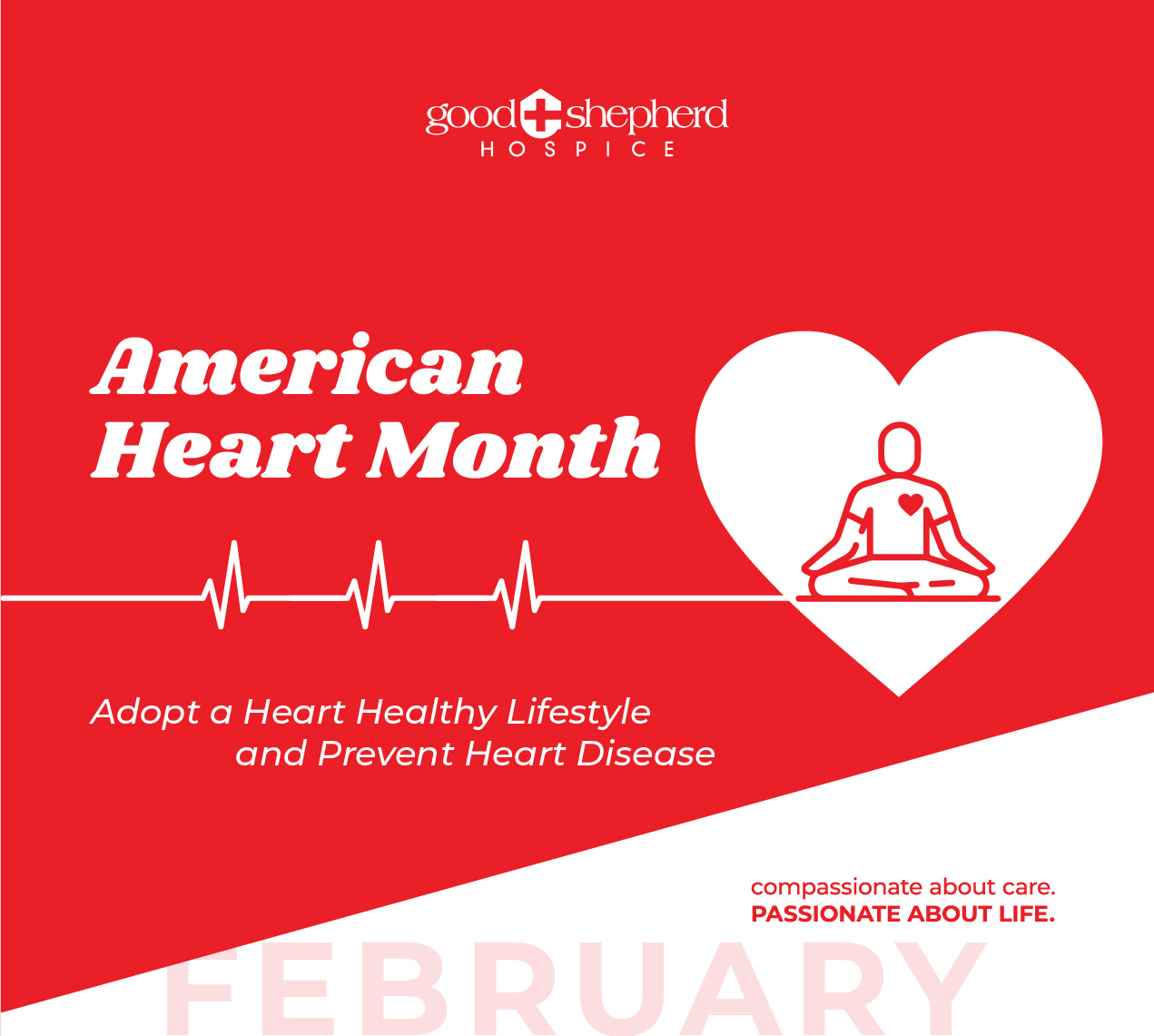February is American Heart Month, a time to focus on promoting a heart healthy lifestyle. Heart disease remains the leading cause of death in the United States.1 In the past few years, having a healthy lifestyle has been more important than ever. Patients with existing heart disease face increasing challenges in the midst of the current pandemic. Furthermore, a sedentary lifestyle with unhealthy diet contributes to a higher risk of heart disease. Fortunately, heart disease can often be preventable with some lifestyle changes. We at Good Shepherd Hospice want to share some ways to avoid the risk of heart disease.
Eat Healthy. A healthy diet is a key to heart disease prevention. Avoid foods that are high in saturated fats and cholesterol, limit your sodium intake, and consume less sugar to help prevent diabetes.
Move More. Maintaining physical activity each week for as little as 30 minutes a day, five days a week, would go a long way. A simple walk, jog, or anything that will keep you moving and away from a sedentary lifestyle will help reduce risk of heart disease.
Quit Smoking. The chemicals in tobacco smoke harm your heart and blood vessels in many ways. Talk to your doctor about ways to quit smoking.
Improve sleep. Improving sleep reduces the risk of having high blood pressure, heart disease, and other medical conditions. Good sleep can help reduce stress and less stress is good for the heart.
Talk to your physician about your blood pressure and cholesterol levels, as well as how to best make these changes in your lifestyle in order to prevent the possible risk of heart disease.
If you have a loved one that is suffering from heart disease and nearing the end of life, hospice care provides important benefits. Congestive heart failure patients receiving hospice care lived an average of eighty-one days longer than similar patients who did not choose hospice.2 A treatment plan focused on symptom and pain management could improve a patient’s quality-of-life immediately. At Good Shepherd Hospice, our team of highly skilled care professionals work together to design an individualized plan of care that meets both family and patient needs. Contact us today to learn more about how we can help.
1U.S. Department of Health and Human Services. 2021, October. Taking care of our hearts, together. National Heart Lung and Blood Institute. https://www.nhlbi.nih.gov/health-topics/all-publications-and-resources/taking-care-hearts-together
2.Connor SR, Pyenson B, Fitch K, Spence C, Iwasaki K. Comparing hospice and non-hospice patient survival among patients who die within a three-year window. J Pain Symptom Manage. 2007 Mar;33:238-46.

